A question that invariably runs through the mind of every board, every CEO, and every steering committee is “What are our customers thinking?”. The question leads generally to the action oriented “And what can we do about it?”. This thinking is not new, yet is one of the most underutilized tools in corporate decision making.
The concept of “Voice of the Customer” can be traced back to the QFD programs launched at Toyota in the late 1970’s and covered in detail in the University of Chicago/M.I.T. Paper, in which Griffin and Hauser drill down in detail to the “Voice of the Customer” or VOC as it is often referred to. While somewhat academic, the paper does lay out some very interesting concepts and ideas related to the Voice of the Customer and then how this can impact product and service development and delivery. The Malcom Baldridge awards of which great prominence were placed in the 1990s and which continue today further the cause on the importance of considering customer inputs.
 Finally we come to Six Sigma and Lean Thinking programs, which a great number of people cringe when even hearing the name, even though when applied correctly the results can be truly break-through. Throughout all of the masses of publications, speaker series, videos, training systems, toolboxes, and ultimately even real-time feedback systems, it seems as if within many organizations the real customer thinking rarely gets to the decision makers in a usual format. The Wall Street Journal has noted that as high a percentage as 60% of improvement initiatives ultimately fail.
Finally we come to Six Sigma and Lean Thinking programs, which a great number of people cringe when even hearing the name, even though when applied correctly the results can be truly break-through. Throughout all of the masses of publications, speaker series, videos, training systems, toolboxes, and ultimately even real-time feedback systems, it seems as if within many organizations the real customer thinking rarely gets to the decision makers in a usual format. The Wall Street Journal has noted that as high a percentage as 60% of improvement initiatives ultimately fail.
 Finally we come to Six Sigma and Lean Thinking programs, which a great number of people cringe when even hearing the name, even though when applied correctly the results can be truly break-through. Throughout all of the masses of publications, speaker series, videos, training systems, toolboxes, and ultimately even real-time feedback systems, it seems as if within many organizations the real customer thinking rarely gets to the decision makers in a usual format. The Wall Street Journal has noted that as high a percentage as 60% of improvement initiatives ultimately fail.
Finally we come to Six Sigma and Lean Thinking programs, which a great number of people cringe when even hearing the name, even though when applied correctly the results can be truly break-through. Throughout all of the masses of publications, speaker series, videos, training systems, toolboxes, and ultimately even real-time feedback systems, it seems as if within many organizations the real customer thinking rarely gets to the decision makers in a usual format. The Wall Street Journal has noted that as high a percentage as 60% of improvement initiatives ultimately fail. What is going on?
At an operational level, a great amount of time and energy has been spent studying the reasons programs fail and today I am not here to talk about this or go down this long road. Instead, I am discussing the Strategic Issues related to what a customer is thinking and how this information can be used to drive increased performance in your firms. Ultimately, your customers will decide whether your organization succeeds or fails and thus it is important to get their feedback in a structured meaningful way as input to Strategic decision making. The feedback will start with a number of strategic questions from your customers.
The strategic questions you want to ask your customers center around a few critical areas which can be consolidated into five themes:
- Current performance of your product and service portfolios relative to competitors as evaluated through the eyes of the customer
- Criteria your customers consider critically important in the evaluation of products and services both today and in the future
- Future product and service needs your customers are identifying which are unfulfilled or poorly fulfilled currently from the customer perspective
- Motivations for changing current suppliers in the future from a customer perspective
- Evaluation of competitive advantage and the motivations for purchasing at specific price premiums or discounts for product and service combinations

In asking and detailing with customers their current perceptions, future needs, requirements, and risks or areas to avoid it is important to systematically capture this information in a format that the board and steering level committees or leadership teams can use to identify the “So What”. The “So What” are the implications to the company of the answers being provided and challenge the organization at the baseline level of Where do we compete and How will we compete?
What becomes clear in many organizations- the “So What" is that the areas where margins are decreasing have a strong correlation to the areas where the customers do not perceive advantages and thus are treating your company as a commodity supplier. Commodity supplier status is very challenging and needs to be looked at carefully in terms of what implications this will have on the future of the company for shareholder returns and performance. What further becomes highlighted is that areas under development need great acceleration of both the time to market processes and the understanding of the underlying customer needs to be met. Valuable work in producing higher returns can start right here with the agreed to product and service combinations that will enable the organization to maintain and enhance future shareholder returns and the agreement on the product and service combinations that should be phased out, sold, spun off, or otherwise removed from the emphasis for growth.
What you can do in your organization to prepare the “So What” areas of consideration is to follow a series of small projects:
- Start with the five themes of questioning and understand how you can gather the information efficiently and correctly.
- Identify your customers, your competitors customers, and the future customers of tomorrow as well as the lost customers of yesterday that you need information from.
- Systematically organize for the groups to be contacted in a way where data can be safely and confidentially collected.
- Prepare the formats necessary to share this information at the senior levels of the organization for evaluation and discussion leading to decision making.
- Recognize and embrace that customer information when collected and utilized correctly provides an input to sustainable competitive advantage.
I recommend you test this out on at least one business unit, division, product/service/market combination and compare the results to your strategic profiles- asking for the hard factual data to compare to how your organization believes the future will unfold and focusing on the points of contrast that can make the difference in maintaining and accelerating your leadership position in the market tomorrow.





%20copy-1.jpg)
